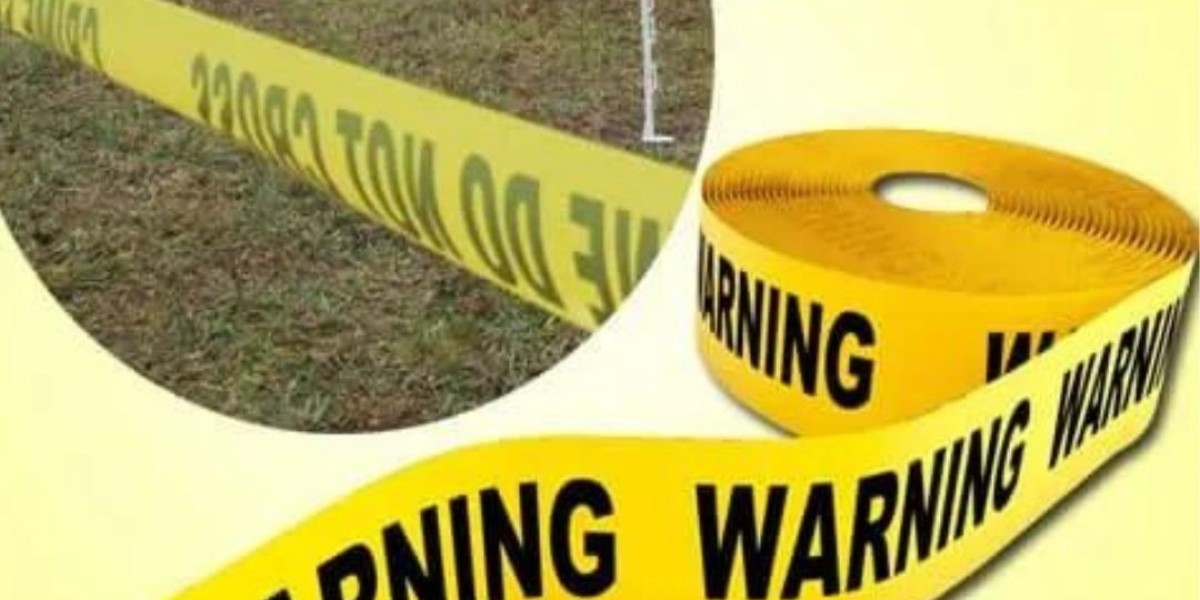What is Underground Warning Tape?
Underground warning tape is a crucial component in the realm of construction and utility management. Designed to alert excavators and construction workers to the presence of buried lines—whether they are electrical, gas, water, or telecommunications—this tape serves a primarily safety-oriented function. It acts as a visual deterrent to accidental damage during excavation activities, which can be both costly and dangerous. The significance of underground warning tape cannot be overstated, as it plays a pivotal role in preventing hazardous incidents associated with underground utilities.
Underground Warning Tape Specification
When selecting Underground warning tape specification is critical for effective application. Underground warning tape is generally made from polyethylene or similar durable materials capable of withstanding the subterranean environment. It features a bright, easily recognizable color—commonly yellow for gas lines, blue for water, red for electrical, and orange for telecommunications—allowing workers to quickly determine what lies beneath the ground.
The specifications often include details such as thickness, width, and tensile strength. The tape typically ranges from 2 to 6 inches in width and can be designed to be resilient against moisture, chemicals, and UV exposure, ensuring it remains intact under various environmental conditions. Additionally, the printing on the tape must be clear and durable enough to last for years, as it needs to be legible long after installation.
Underground Warning Tape Installation
The correct Underground warning tape installation is essential for its effectiveness. The process generally begins after the utility lines have been laid. For optimal results, the underground warning tape should be installed at a specified depth. The standard depth is usually 12 to 18 inches above the buried utility lines. This positioning ensures that, even with mechanical digging, workers can identify the warning tape before striking the lines.
When installing the tape, it should be laid flat with no wrinkles or folds, which can obscure the important warning messages printed on it. The tape should be marked with the type of utility and possibly the year of installation to maintain awareness over time. Proper installation not only complies with local regulations but also enhances safety during future excavations. Being proactive about tape installation draws heightened awareness and minimizes the risk of accidents, reflecting the significance of this simple yet effective safety tool.
Warning Tape Underground Cable
As technology and infrastructure continue to evolve, the challenges related to underground cable management have become more complex. Warning tape underground cable is designed particularly for signaling the presence of telecommunications lines and data cabling. With the growing reliance on internet and communication systems, appropriate warning measures are vital. Like other utility tapes, underground cable warning tape often adheres to specific color coding—orange or blue—to denote telecommunications and data lines.
When employing warning tape for underground cables, it is crucial for utility companies and contractors to remain consistent with industry standards. This consistency ensures that any worker on-site knows precisely what type of utility is present. When inadvertent damage occurs to underground cables, it can lead to service interruptions, safety hazards, and significant repair costs. As such, proper identification through marking and warning tape is a preventive measure that enhances the overall safety of construction sites.
Benefits of Using Underground Warning Tape
The advantages of using underground warning tape extend beyond simple hazard identification. Firstly, it aids in maintaining productivity. By marking utility lines effectively, operators can work more efficiently, minimizing the potential for disruptions due to underground damage. Additionally, underground warning tape serves to improve compliance with local regulations, which often require utilities to be clearly marked. This adherence to legal guidelines protects both workers and companies.
Furthermore, long-lasting materials and legible printing ensure that the warnings remain visible, even over time. The use of warning tape presents a cost-effective strategy to prevent damage during landscaping, roadworks, or other excavative endeavors. Investing in high-quality underground warning tape not only preserves crucial utility lines but also protects the workforce, allowing everyone to carry out their roles more safely.
FAQs
1. What colors are typically used for underground warning tape, and what do they signify?
Most underground warning tapes adhere to a specific color-coding system:
Yellow: Indicates gas lines.
Blue: Represents potable water lines.
Red: Signals electrical power lines.
Orange: Denotes telecommunications or alarm lines.
Green: Often used for sewage and drainage lines.
Understanding these colors is crucial for ensuring safety and regulatory compliance on construction sites.
2. How deep should underground warning tape be installed above utility lines?
The recommended depth for placing underground warning tape is typically between 12 to 18 inches above the utility lines. This ensures that the tape remains intact and visible even when excavators are digging deeply into the soil. Proper depth reduces the likelihood of damage to utility lines and increases safety for workers.
3. Can underground warning tape be reused, or is it typically a one-time installation?
Underground warning tape is generally considered a one-time installation. Although the tape is designed for durability, it is laid to serve its purpose of identification and safety. If the original tape becomes damaged or obscured, it is advisable to replace it to ensure ongoing visibility and compliance with safety regulations.






